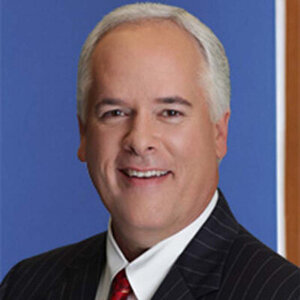Trends in high-net-worth donor considerations

As the philanthropic landscape evolves, so to do the considerations and values of major donors. At Whittier Trust, our clientele comprises highly affluent individuals and families who are seeking, among other services, ways to align their wealth with their values and leave a lasting legacy.
It is important to remember that philanthropy is advised as a key piece of wealth management. As such, while our clients are looking to contribute to their communities and the common good, a number of other factors help determine where and how much they decide to give. The advisors in our philanthropy department have noticed two relevant trends to consider.
ESG factors
Consideration of environmental, social, and governance (ESG) factors, such as supporting land conservation or social movements, is already a primary driver for philanthropy among our clients. It is now commonplace for us to conduct due diligence on the ESG factors as well as on quality opportunities across investing, real estate, and philanthropy. Clients understand that organizations that score high on the ESG scale are mitigating risks, reducing taxes, and ensuring long-term sustainability; they recognize that applying an ESG, or impact, lens can enhance returns and impact.
Once clients settle on a cause to support, their due diligence turns to organizations: Who should they consider partnering with to accomplish their goals? At this stage, donors want to know how in depth you have considered ESG factors within your own organization. As much as they want to see the impact their donation will have, they believe that practicing what you preach is equally important. Their focus is often on the details that turn out to be the underpinnings of organizational culture: What’s your commitment to recycling? Have you identified truly sustainable supply chains for your operations? How does your organization treat its employees, donors, and beneficiaries? Do you report high levels of satisfaction within the organization itself? Does the organization have low employee turnover and high donor retention?
While we would hope the answer is “yes, of course,” we’ve also seen that an organization can be so focused on accomplishing its mission that it sacrifices other measures of organizational success. We advise our clients that systematic effectiveness is a key indicator of future success as well. Donors want to establish a relationship with nonprofits. The last thing they want to do is place their resources with an organization where they won’t make a difference or devote time and energy to a successful effort that’s unsustainable.
Targeting multiple generations
As advisors, we take a holistic approach to wealth management that looks at a family’s situation as well as its assets, trust, and investment portfolio. We often advise that philanthropy is a great way to strengthen familial bonds and discuss their financial realities, and we’ve seen a lot of positive trends with this line of dialogue. With healthy communication practices, families can avoid a real-life reenactment of Succession by involving members of multiple generations in the decision-making process.
This is to say, you should be considering the whole family when a principal gift is up for reevaluation or when soliciting new leads. Donors recognize that aligning their values and their wealth is a great opportunity to leave a lasting, positive legacy, and that this requires ensuring that subsequent generations take up their torch. As our clients involve their children and grandchildren in decisions regarding charitable giving, one of two things happens: Either they communicate the importance of their values and attempt to convince the family to stay the course, or they allow other family members to say which causes and nonprofits they want to support and reach a consensus together.
In either case, there is an opportunity for you to reach the decision makers who have final say—through the younger members of the family—by demonstrating that you value their role and potential contributions. Identify and speak to the passions of the second and third generations. They may not all have the same ideas about what they want, but you can give each family member something vital to take away from the giving experience. You may also have a chance to influence the values and passions of the younger generations through donor education.
Consider hosting events for different generations, each with their own messaging. Create an opportunity for these members of the family to meet other future and like-minded donors, gain insight into your organization, and understand why they should—if they don’t already—care about your cause. Similarly, consider letting younger generations experience the world of your organization during a non-special occasion. Perhaps they could sit in on donor meetings, or come into the office and shadow key staff members for a day. Giving them an authentic and exclusive behind-the-scenes view of your nonprofit will help them feel ownership and pride in their connection to your organization.
At the end of the day, our clients want to know why donating to your nonprofit is a better use of their resources than giving to another organization or even starting their own foundation. As a philanthropic organization, you likely have principal gift outreach and relationship management down to a science. Just don’t forget the little things. Don’t forget about the family, and don’t forget about the ESG factors that affect your own people and operations.
Tim McCarthy is managing director of business development at Whittier Trust, the largest multifamily wealth management office on the West Coast. He also is a member of the Whittier Trust of California board of directors.





